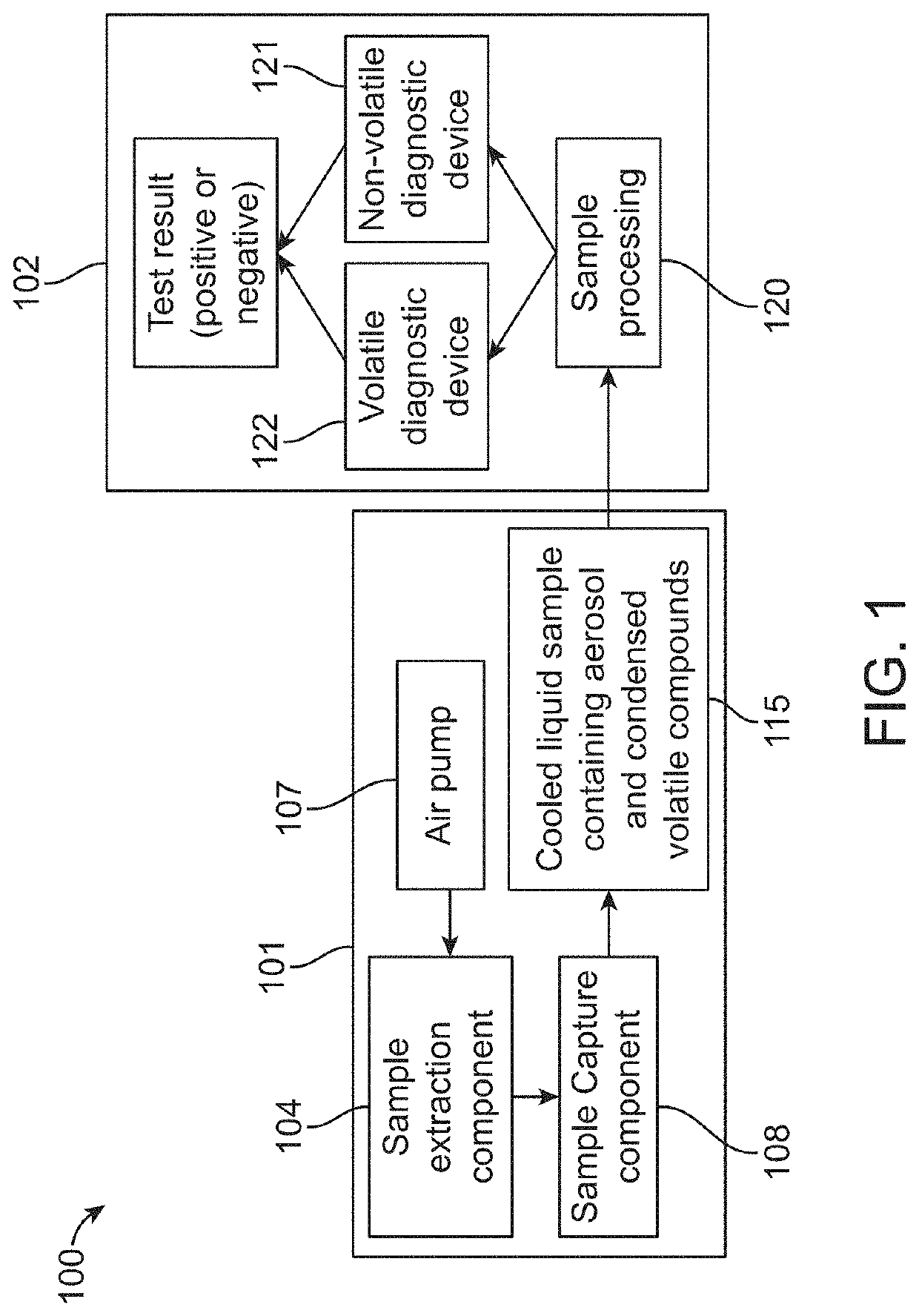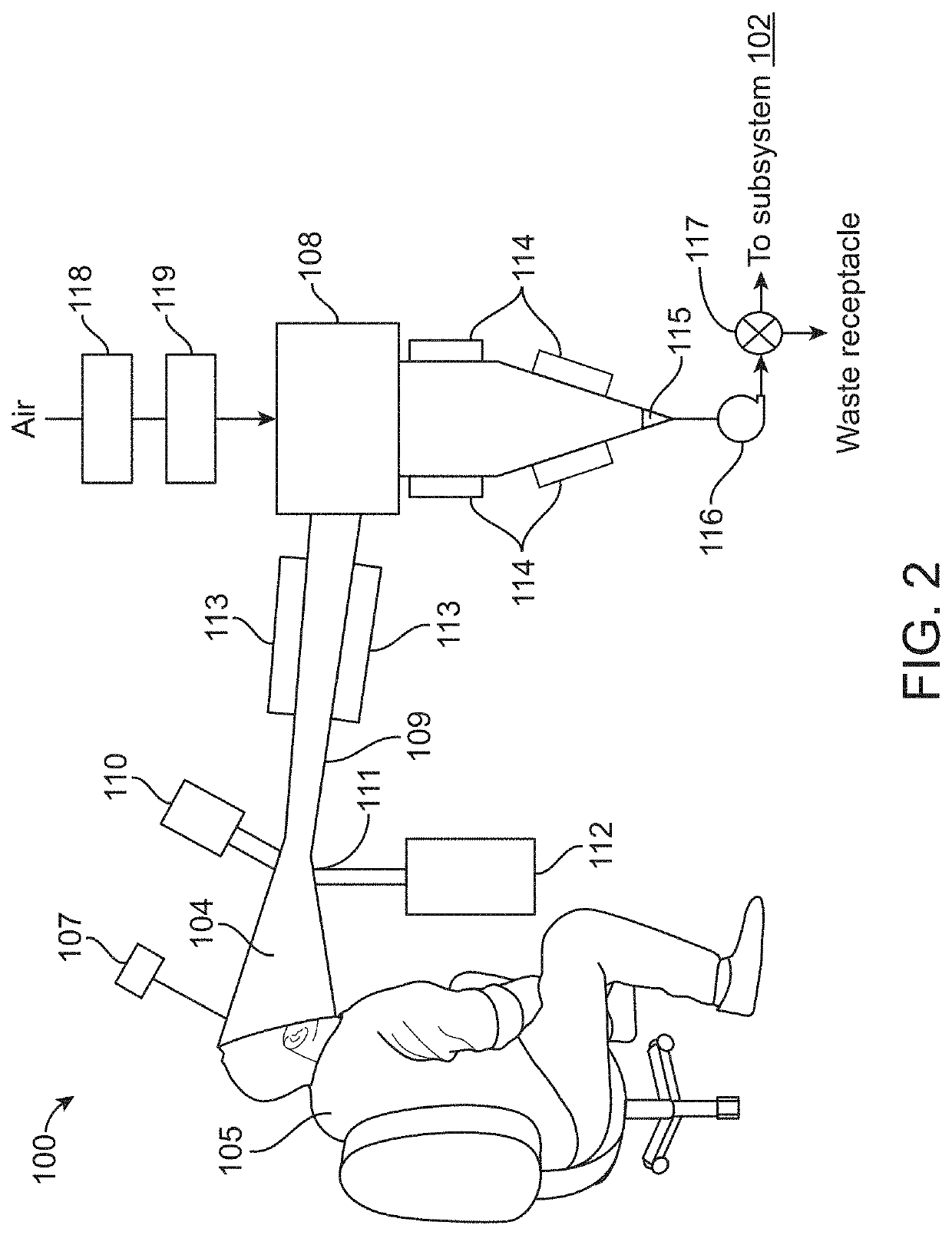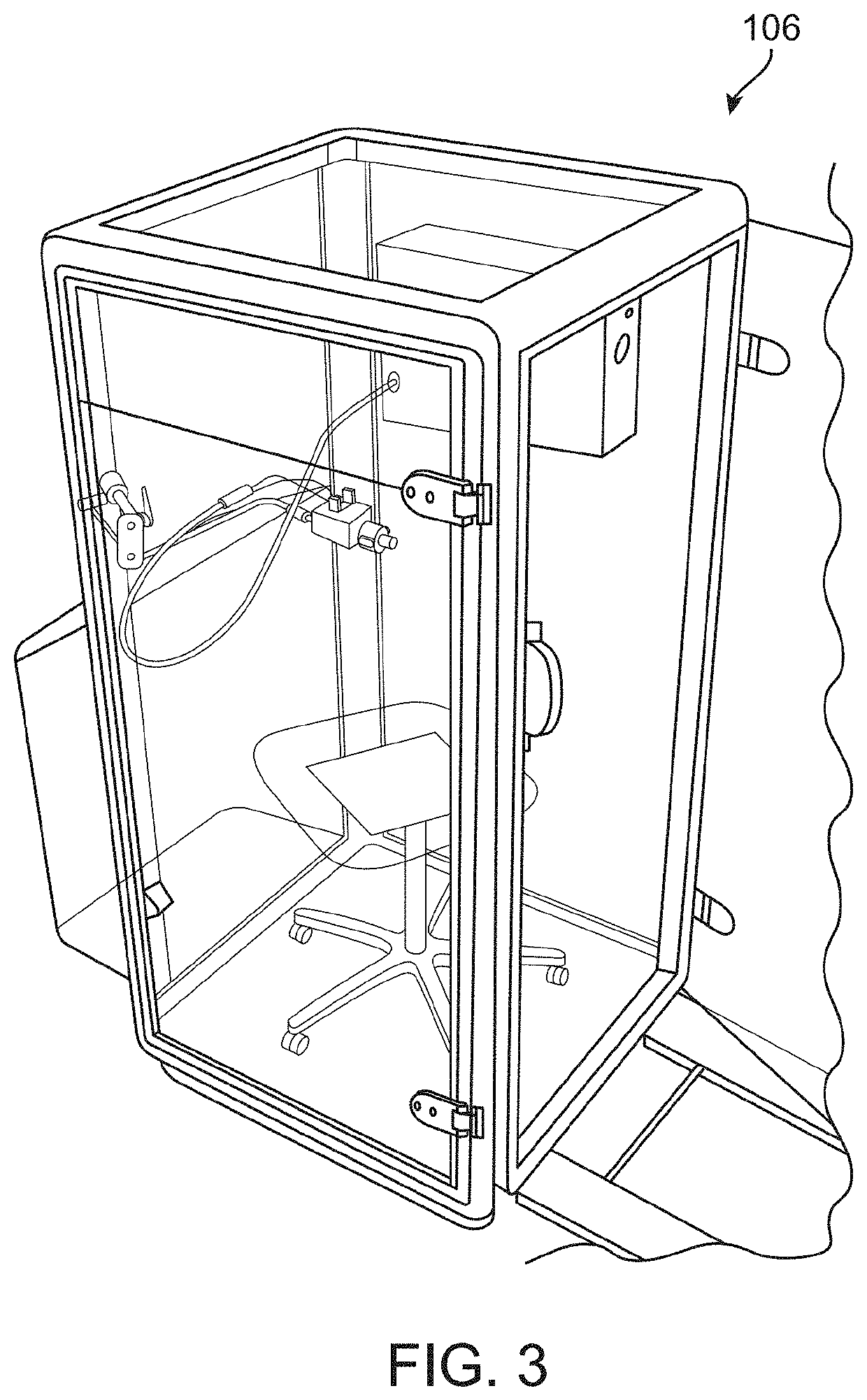Diagnosis of tuberculosis and other diseases using exhaled breath
a technology of exhalation and diagnosis, applied in the field of diagnosis of tuberculosis and other diseases, can solve the problems of significant reduction of disease burden, inability to diagnose, and inability to accurately diagnose the disease, and achieve the effects of high burden of tb infection and limited access to medically trained personnel
- Summary
- Abstract
- Description
- Claims
- Application Information
AI Technical Summary
Benefits of technology
Problems solved by technology
Method used
Image
Examples
example
[0065]200 EBA samples were collected from 99 study subjects during different visits related to a clinical trial. Active TB cases were defined as study subjects who tested positive (“GXP positive”) during analysis of their sputum using a GeneXpert MTB / RIF system (Cepheid, Sunnyvale, Calif.). Subjects who tested negative with the same method (“GXP negative”) were used as the control group. 73 subjects were found to be GXP negative and 26 subjects were found to be GXP positive. EBA samples from these subjects were also collected in about 10 ml buffer solution using exemplary system 190 (FIG. 10). EBA samples from each subject were extracted from the buffer solutions using a C18 packed bed column.
[0066]C18 beads of nominal diameter of 20 μm (Hamilton, Reno, Nev.) were packed into a packed bed column. About 10 ml of buffer solution comprising the EBA sample was loaded into the column using a syringe pump by flushing. The column was washed first with about 400 μL of 0.1% FA in water three...
PUM
| Property | Measurement | Unit |
|---|---|---|
| flow rate | aaaaa | aaaaa |
| flow rate | aaaaa | aaaaa |
| volume | aaaaa | aaaaa |
Abstract
Description
Claims
Application Information
 Login to View More
Login to View More - R&D
- Intellectual Property
- Life Sciences
- Materials
- Tech Scout
- Unparalleled Data Quality
- Higher Quality Content
- 60% Fewer Hallucinations
Browse by: Latest US Patents, China's latest patents, Technical Efficacy Thesaurus, Application Domain, Technology Topic, Popular Technical Reports.
© 2025 PatSnap. All rights reserved.Legal|Privacy policy|Modern Slavery Act Transparency Statement|Sitemap|About US| Contact US: help@patsnap.com



